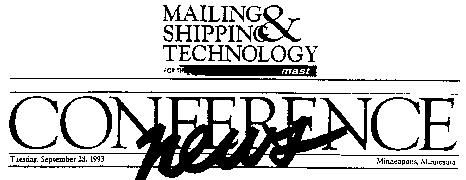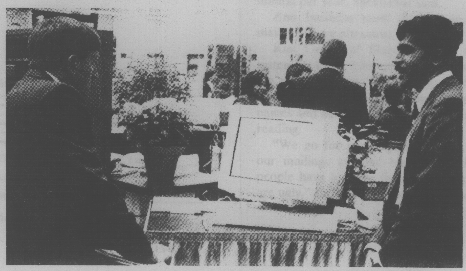

By M.B. Smith
Keith Bettinger's eyes got wide and his mouth dropped opened. Had his computer software -- a more than $10 million collaborative effort between the United States Postal Service and State University of New York- Buffalo -- failed him?
The zip code I had handwritten on an envelope just minutes earlier was not valid, according to his machine.
I scratched my head knowing darn well that my mail came to that zip code. He scratched his head knowing that his database of delivery points -- all 120 million in the United States -- should have recognized the zip code.
"Well, they did just change it not too long ago," I said.
Bettinger breathed easier and smiled. "That's it. This database is not up to date," he said. "What's the old zip code."
This software, which reads handwritten addresses and zip codes on envelopes with a 40 percent accuracy rate, is cutting edge technology that could save the postal system and businesses with huge mailings millions of dollars, said Bettinger, a software engineer at SUNY Buffalo.
The software breaks down a handwritten address and separates its elements. First, it separates the zip code and then the street address. It then matches the elements with a data base listing all the addresses in the U.S. The result is a bar code unique to each address.
When implemented in the postal system and business, the code would then be printed on the envelope finishing a fully automated sorting process.
"Nobody has done this," said Ajay Shekhawat, a research scientist at SUNY, Buffalo. "This is a real demo not a canned one like you see at other booths. This is your address -- your real address.
"Nobody thought we could do this when we started," said Bettinger.
The project began 10 years ago when SUNY-Buffalo was given a contract by U.S.P.S. to develop software that could simply locate the address on an envelope. With all the logos and "clutter" on some envelopes simply locating an address was difficult for a machine, Bettinger said.
From there the project developed into what it is today.
"Some research science is like a divide and conquer theory," Bettinger said. "We start with a general aim and get more specific."
Bettinger said it may be five years until the technology is ready for the marketplace. The research team's goal is to speed up the process to five pieces of mail per second while maintaining the 40 percent accuracy rate.
And business uses? It may make mailing more attractive
Kim Groen of Fingerhut gave the system a look. Like many businesses, the mailings from Fingerhut have blue boxes for customers to write their names and addresses in to facilitate easy reading.
"We go for a real personal look in our mailings and the blue boxes that people have to write their addresses in are ugly," she said. "Getting rid of those would be nice."
 Researcher Ajay Shekhawat demonstrates the writing-identification software.
Researcher Ajay Shekhawat demonstrates the writing-identification software.